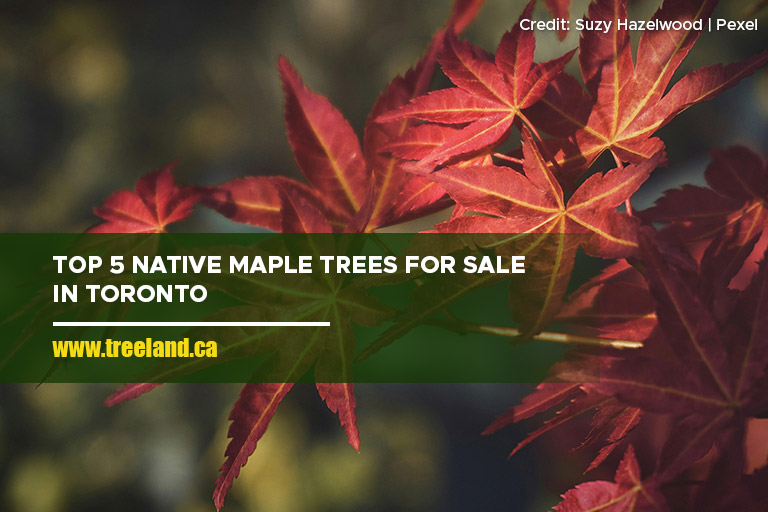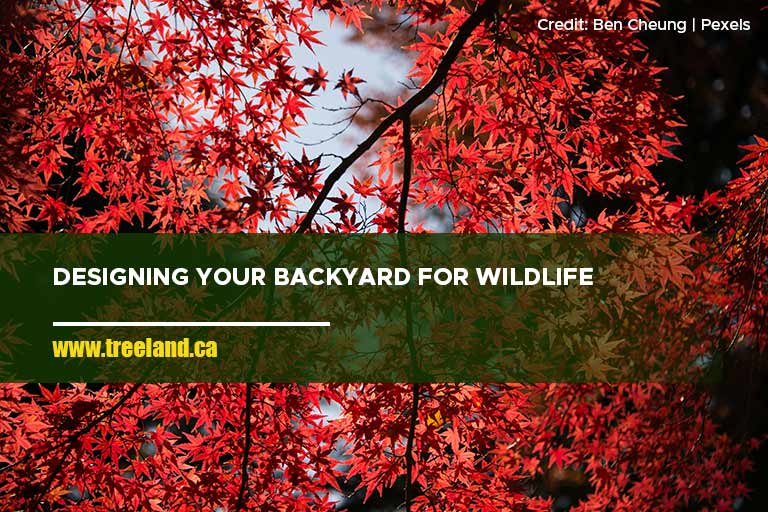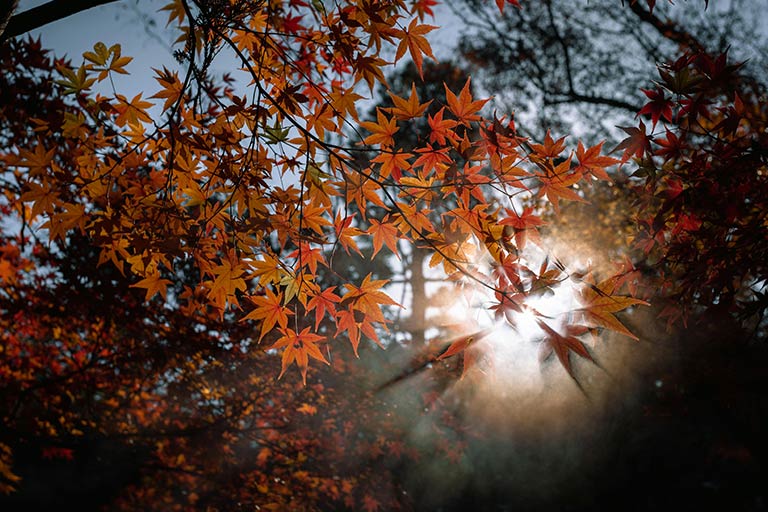Transforming your backyard into a haven for local wildlife while adding a touch of elegance is achievable with the right selection of trees. In Toronto, native maple trees are an excellent choice for this endeavour. Not only do they enhance the aesthetic appeal of your garden, but they also provide crucial habitats for local wildlife. This guide explores the top five native maple trees available in Toronto and how they can attract and support various species in your backyard.
Why Choose Native Maple Trees?
“The maple tree is the perfect symbol of Canada—majestic, resilient, and unique.”-Farley Mowat
Native maple trees are a fantastic addition to gardens in Toronto for several reasons:
- Adaptability: Native maples are well-suited to the local climate and soil conditions, making them easier to care for and more likely to thrive.
- Wildlife Support: These trees offer essential food and shelter for native birds, insects, and other wildlife.
- Seasonal Interest: They provide beautiful seasonal displays, from vibrant fall colours to striking winter silhouettes.
By incorporating native maples into your garden, you create a more sustainable and ecologically friendly space that benefits local wildlife and enhances your outdoor environment.
Top 5 Native Maple Trees for Sale in Toronto

1. Red Maple (Acer rubrum)
Overview
The Red Maple is one of the most iconic trees in Toronto. Known for its striking red foliage in the fall, this tree is a popular choice for adding vibrant colour to your garden.
Features
- Leaves: Brilliant red in autumn, turning green during the growing season.
- Size: Can grow up to 50 feet tall with a spread of about 40 feet.
- Growth Rate: Fast-growing, making it a great choice for quick impact.
Wildlife Benefits
Red Maples attract a variety of wildlife. Their seeds are a food source for birds, while the tree’s flowers provide nectar for bees and butterflies. Additionally, the tree’s dense canopy offers shelter and nesting sites for various birds.
2. Sugar Maple (Acer saccharum)
Overview
The Sugar Maple is renowned for its stunning fall colours and is also famous for producing maple syrup. It’s a majestic addition to any garden in Toronto.
Features
- Leaves: Brilliant orange and red hues in fall.
- Size: Reaches up to 75 feet in height and 50 feet in width.
- Growth Rate: Moderate to slow, but long-lived.
Wildlife Benefits
Sugar Maples are beneficial for local wildlife. Their seeds are eaten by birds and small mammals, while the tree’s sap supports various insect species. The dense foliage provides excellent cover and nesting sites for birds.
3. Silver Maple (Acer saccharinum)
Overview
The Silver Maple is valued for its fast growth and graceful, deeply lobed leaves. It adds a touch of elegance to gardens and is particularly suited to wetter areas.
Features
- Leaves: Silver underside gives a shimmering appearance in the wind.
- Size: Can grow up to 60 feet tall with a spread of 50 feet.
- Growth Rate: Fast-growing.
Wildlife Benefits
Silver Maples are a haven for wildlife. Their seeds attract birds and squirrels, while the tree’s flowers offer nectar to bees. The large, spreading branches provide ample shelter for various bird species.
4. Norway Maple (Acer platanoides)
Overview
Though not originally native, the Norway Maple has become naturalized in Toronto and is often included in local plant selections. It’s valued for its adaptability and dense canopy.
Features
- Leaves: Large, dark green leaves turning yellow in the fall.
- Size: Grows up to 50 feet tall and 40 feet wide.
- Growth Rate: Moderate.
Wildlife Benefits
Norway Maples support a range of wildlife. The tree’s seeds are a food source for birds, and its dense foliage offers cover and nesting sites. However, it’s important to note that its invasive tendencies can sometimes overshadow its benefits.
5. Boxelder (Acer negundo)
Overview
The Boxelder, also known as the Manitoba Maple, is a hardy tree that thrives in a variety of conditions. It’s a good choice for less formal gardens.
Features
- Leaves: Compound leaves with three to five leaflets.
- Size: Typically reaches 40 to 50 feet in height.
- Growth Rate: Fast-growing.
Wildlife Benefits
Boxelders attract a range of wildlife. Their seeds are consumed by birds, while the tree provides shelter and nesting opportunities. Additionally, the tree’s flowers offer nectar to early-season pollinators.
Designing Your Backyard for Wildlife

Choosing the right native maple trees is just the beginning. To create an inviting space for wildlife, consider the following tips:
Plan Your Garden Layout
- Placement: Position your maple trees to provide maximum benefit. For instance, place them where their canopy can offer shade and shelter.
- Companion Plants: Include native plants that support wildlife, such as wildflowers and shrubs that provide additional food sources.
Create a Diverse Habitat
- Variety: Incorporate a mix of trees, shrubs, and ground cover to offer diverse habitats for different species.
- Water Sources: Adding a birdbath or small pond can attract a wider range of wildlife.
Maintain a Healthy Garden
- Pest Management: Use eco-friendly methods to manage pests and diseases to protect your trees and the wildlife they support.
- Regular Care: Ensure your trees and garden receive the necessary care to keep them healthy and thriving.
FAQs
What are the benefits of planting native maple trees?
Native maple trees provide beauty and seasonal interest, support local wildlife, and are well-adapted to the local climate and soil conditions.
Where can I find native maple trees for sale in Toronto?
You can find native maple trees at local nurseries, garden centres, and online retailers in Toronto. Many of these places offer a variety of options and expert advice.
How do I plant a native maple tree?
Dig a hole twice as wide as the root ball and the same depth. Place the tree in the hole, fill it with soil, and water thoroughly. Apply mulch around the base to help retain moisture.
How do native maple trees benefit local wildlife?
Native maple trees provide food sources, such as seeds and nectar, and offer shelter and nesting sites for various bird species and insects.
How often should I water my native maple trees?
Water your native maple trees regularly to keep the soil moist but not waterlogged. Adjust the frequency based on weather conditions and the tree’s needs.
In conclusion, create a haven for both you and nature with the enchanting beauty of native maple trees. These remarkable trees offer more than just stunning foliage; they are vital to supporting local wildlife. By incorporating native maples into your Toronto backyard, you’re contributing to a thriving ecosystem while enhancing your property’s allure.
Let Caledon Treeland guide you in selecting the perfect maple trees and crafting a harmonious garden design. With their expertise, you can transform your outdoor space into a wildlife sanctuary that bursts with color and life.
Ready to embrace the magic of native maples? Contact Caledon Treeland at (905) 880-1828. Discover the joy of sustainable gardening and watch your backyard come alive.

